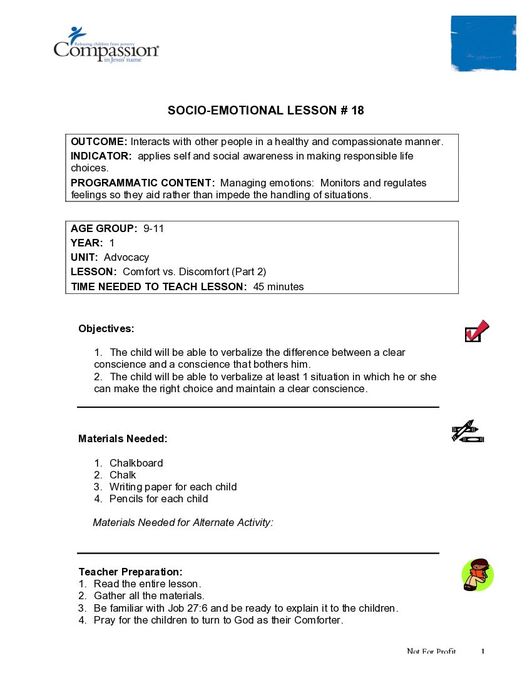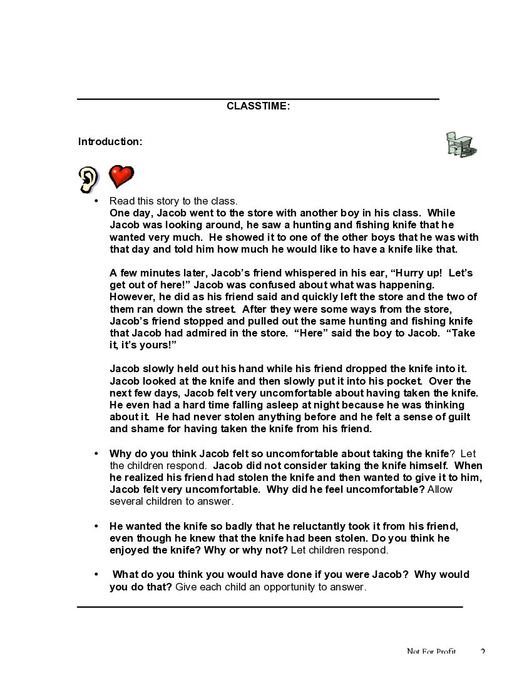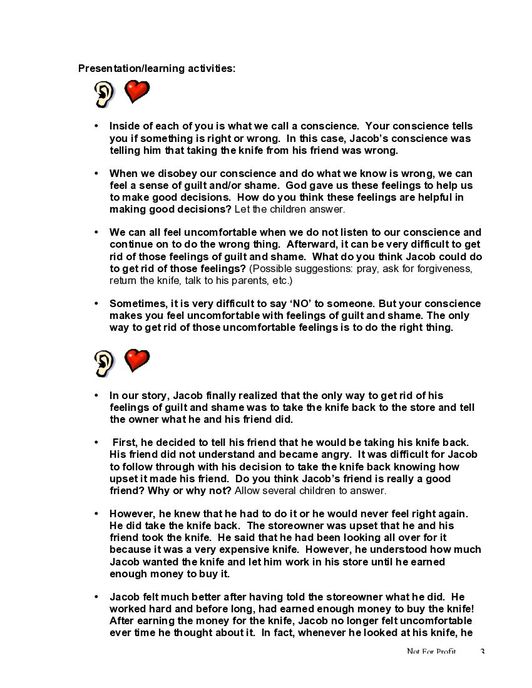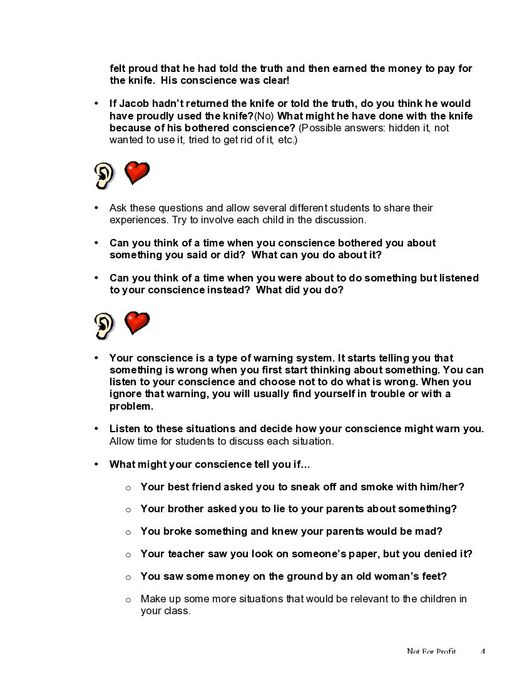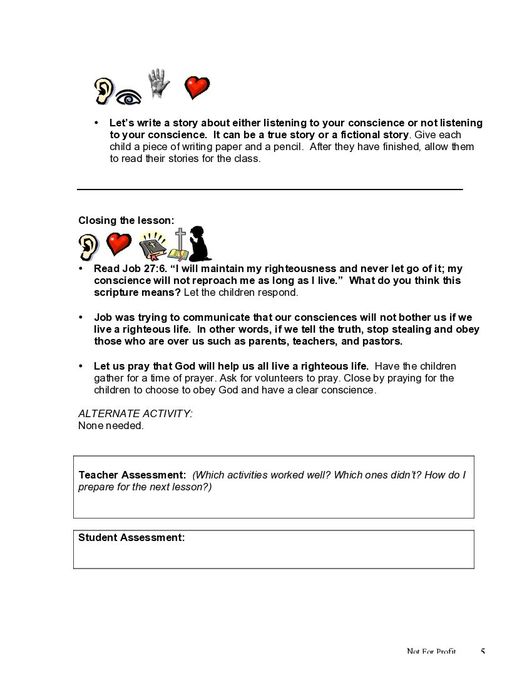Comfort vs. Discomfort (Part 2)
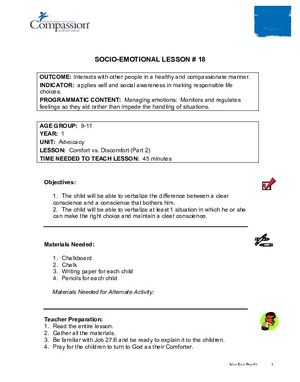
Preview
Login Required
Lazima uwe mmoja wa jamii ya ForChildren.com ili upakue nyenzo/raslimali zilizomo. Bofya vitufe vilivyo hapa chini ili uingie au ujisajili!
| Category | None |
| Copyright Owner | Compassion International |
The lesson “Comfort vs. Discomfort (Part 2)” teaches children about self and social awareness, the managing of emotions and feelings, and how to verbalize those emotions and feelings in an appropriate way. The children learn the meaning of a clear conscience and vocalize the difference between a clear conscience and a conscience that is bothersome and how a clear conscience is “comfortable” and an unclear conscience is “uncomfortable.” The children then verbalize and demonstrate making the right choice in a situation in order to maintain a clear conscience. The children learn the importance of having good rules, and obeying the rules. The children take turns listing the rules they have in place at home and discuss how it is important that God placed parents in authority over children and for children to respect and obey their parents. The lesson includes guided instructions for the teacher, including preparation, a script, and suggested activities to facilitate further learning in a fun and interactive manner. This lesson is designed for children between 9-11 years, and is the 18th lesson in the 1st year Core Curriculum Set and part of the “Family” unit.
Related Documents
-
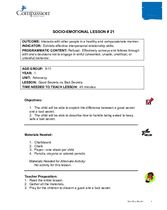
Good Secrets vs. Bad Secrets
The lesson “Good Secrets vs. Bad Secrets” teaches children more about self and social awareness, specifically about refusal and how to ef… -
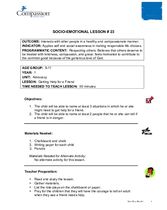
Getting Help for a Friend
The lesson “Getting Help for a Friend” teaches children more about healthy relationship development and both social and self-awareness in… -
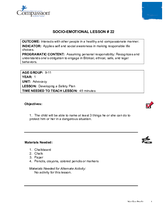
Developing a Safety Plan
The lesson “Developing a Safety Plan” teaches children about the importance of assuming personal responsibility in order to maintain and … -
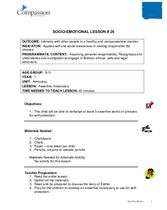
Assertive Vocabulary
The lesson “Assertive Vocabulary” teaches children more about personal responsibility and the healthy development of Godly character thro… -
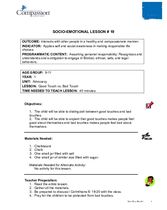
Good Touch vs. Bad Touch
The lesson “Good Touch vs. Bad Touch” teaches children to assume personal responsibility and the obligation to engage in Biblical and saf… -
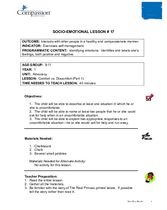
Comfort vs. Discomfort (Part 1)
The lesson “Comfort vs. Discomfort (Part 1)” teaches children about identifying the feelings of comfort and discomfort in a situation and… -
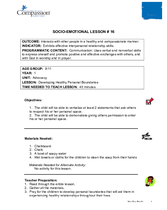
Developing Healthy Personal Boundaries
The lesson “Developing Healthy Personal Boundaries” teaches children about healthy and compassionate interpersonal relationships and how … -
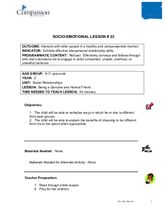
Being a Genuine and Honest Friend
The lesson “Being a Genuine and Honest Friend” teaches children more about healthy relationship development and both social and self-awar… -
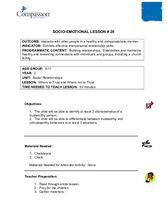
Whom to Trust and Whom Not to Trust
The lesson “Whom to Trust and Whom Not to Trust” teaches children more about personal responsibility and interpersonal relationships. The… -
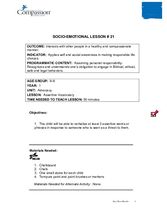
Assertive Vocabulary
The lesson “Assertive Vocabulary” teaches children the ability to verbalize at least three assertive words or phrases in response to some…
ForChildren.com is presented by Compassion International, a registered 501(c)3 non profit organization. All resources, courses, and discussions are intended for educational use only, not for profit.





